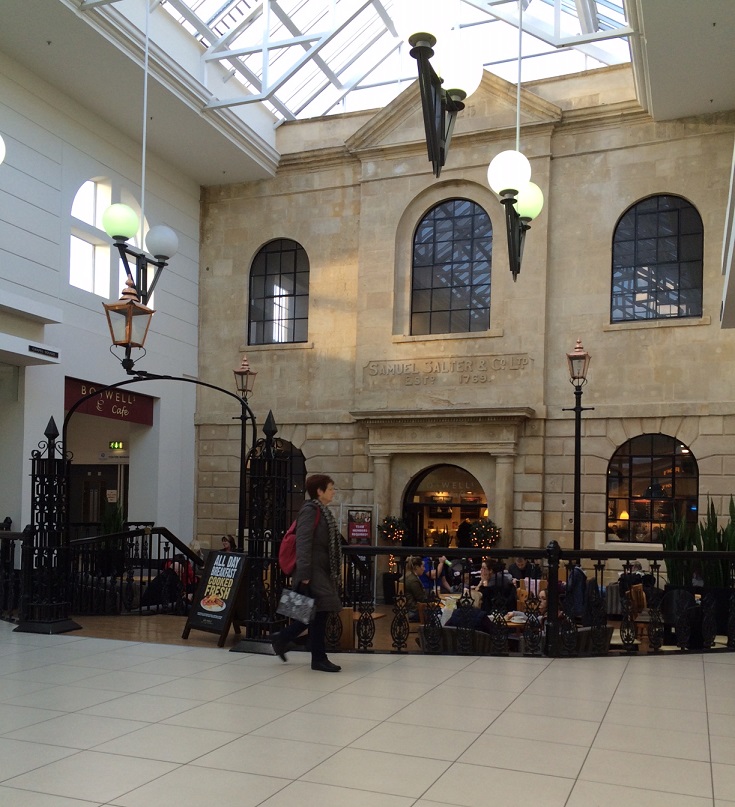
Trowbridge Museum entrance
in Fore Street Mall in The Shires Shopping Centre
In the middle of a modern shopping mall in darkest Wiltshire is a small entrance to the Trowbridge Museum. It caught my eye because there were weaving shuttles in the window of what I assumed was a shop, until I looked up and saw three sheep and the word ‘Museum’… Now anyone who is aware of my other work will know that I can’t pass up the whiff of wool, so off I went to investigate. Leaving the crisp whiteness of the coffee and grease-infused mall, I found a steep staircase of red brick and metal rails in deep contrast to the world I had just left behind (there is a lift too, for staircase-challenged individuals). Two floors up, you find yourself on the top floor of an old woollen mill and the home of the museum. There are looms aplenty, and a history of the area’s involvement in the wool trade and all aspects of weaving. There are pieces of fabric created on the historic looms in the museum, available to take away for a donation to the museum’s coffers. And there are some amazing images of workers in the mill from the days of yore – which as a picture researcher and social historian, I was very excited to see. Now often when you see images of this nature you’ll see a credit to Mary Evans Picture Library or Getty Images, but not here. These aren’t generic mill pictures from an image library – they are packed with local interest, from local sources, showing the actual exhibit in front if you being worked in sepia by Victorian and Edwardian men and women.
For a small museum, it manages to give you plenty of interesting facts. I’ve heard the term ‘burring’ but never really thought about its origins. Well bugger me if it isn’t just that! Burrs (dried teasel pods) were attached to a small wooden frame, like a hand-sized paddle, and used to comb the fabric to raise the nap. After the industrial revolution numerous individual combs were attached to a huge frame to cope with the demands of mass cloth manufacture. As the pods wore down, the combs would be reversed – a strangely primitive looking tool when compared to the amazing advances in technology that had taken over other areas of weaving. Eventually they were replaced in the napping machine by combs of metal hooks – though, apparently, they were generally considered inferior to nature’s offering.
The staff at the museum were really helpful, and when I mentioned the contrast between the mall and the museum, they pointed out that the cafe in the mall downstairs was actually housed in the original entrance to the mill. So I had a look on the way out and realised that the entrance which I’d mistook for a Disney-style addition to the new mall, was actually old stuff. Very pleased that the developers were able to keep this amazing piece of history.
 Samuel Salter & Co Ltd (est. 1769), now Boswell’s Cafe
Samuel Salter & Co Ltd (est. 1769), now Boswell’s Cafe
The museum has recently won lottery funding to expand. I’ll look forward to revisiting and experiencing more historical gems which are no doubt currently in storage.